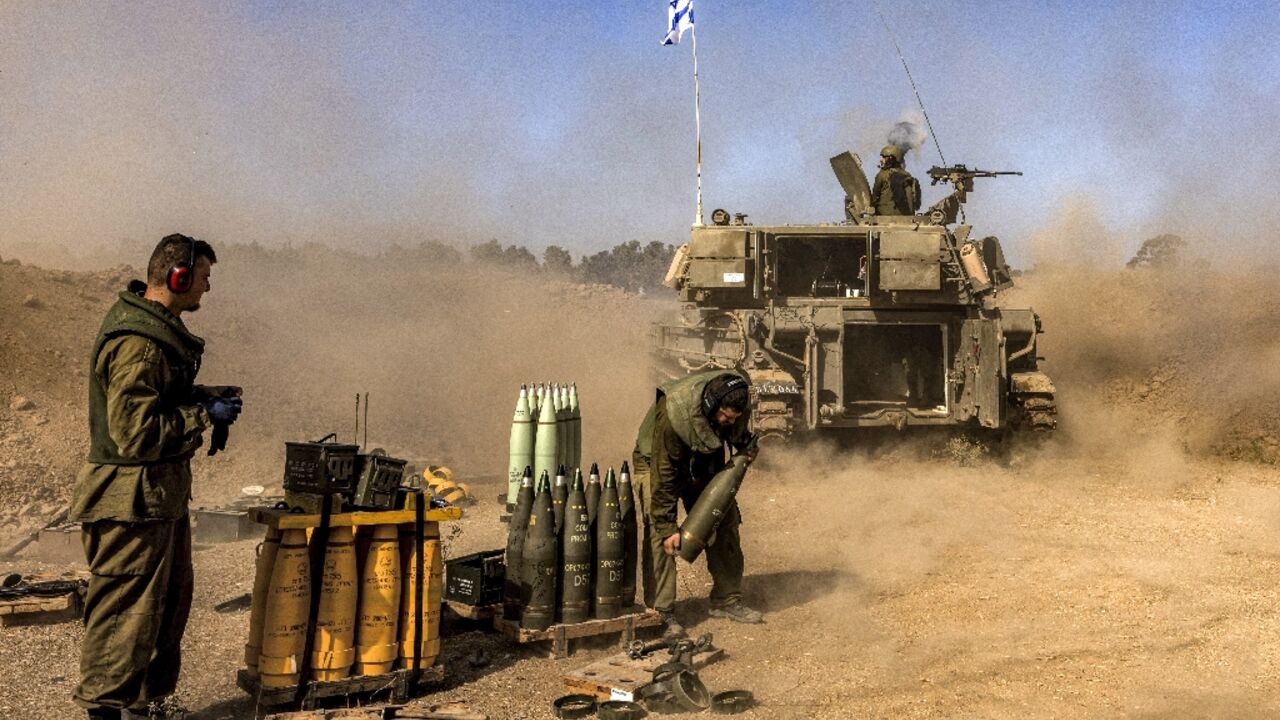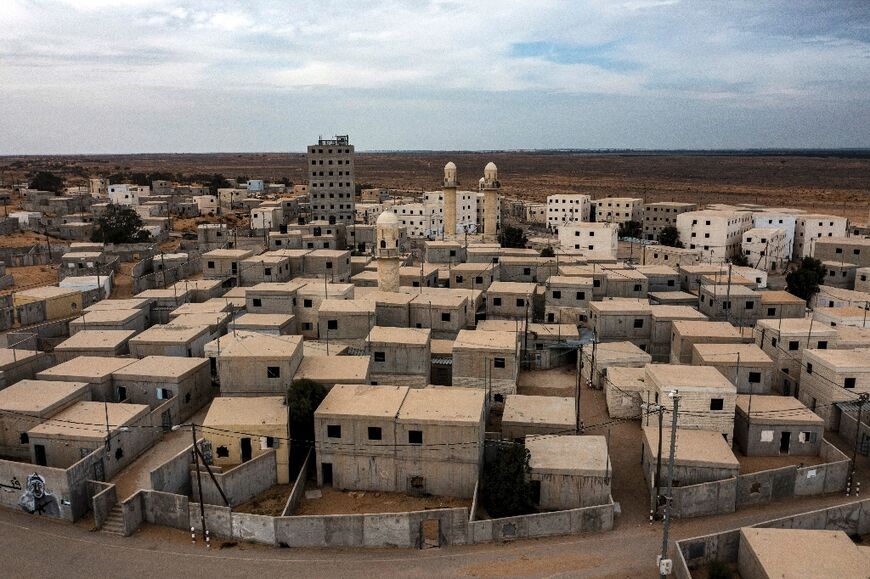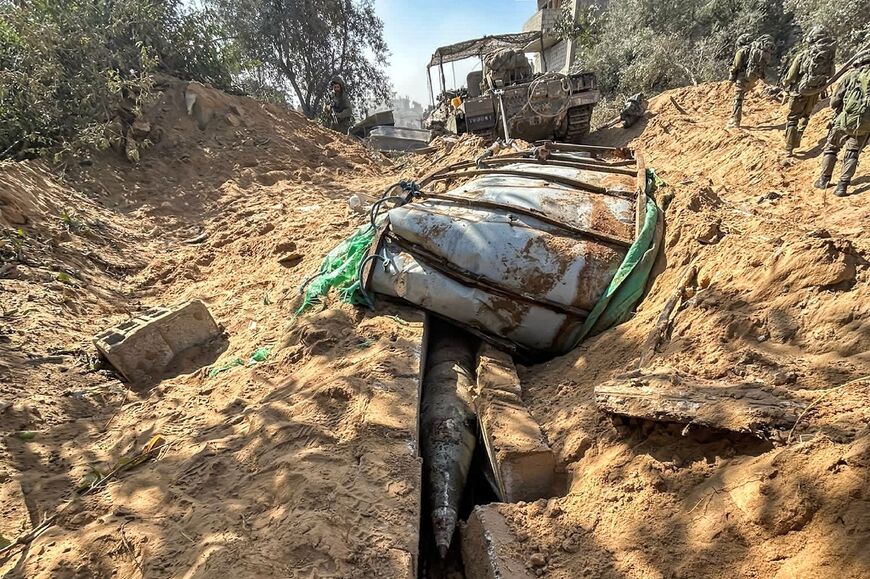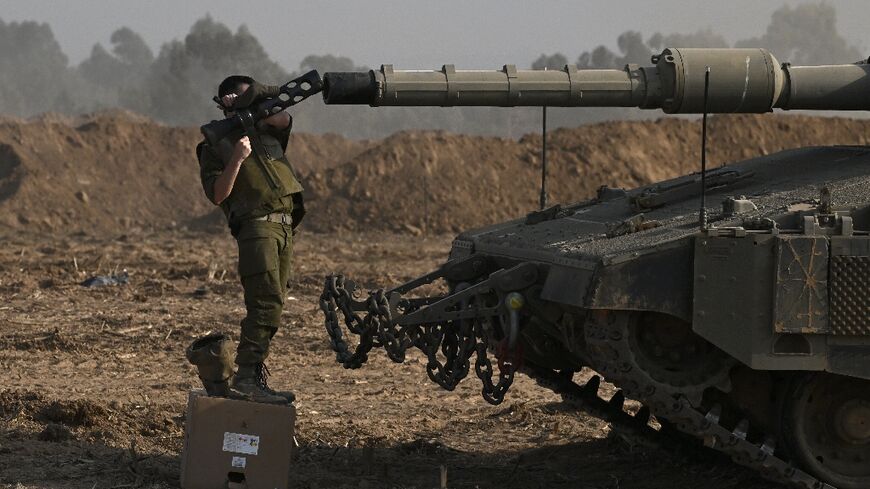Israel and Hamas in high-stakes ground combat among Gaza rubble

The Israeli army is engaged face to face with Hamas fighters on the edges of Gaza City, foreshadowing what analysts describe as an extreme phase of urban combat with grave risks for both sides.
In the north of Gaza City, ground combat is well underway, according to Israeli army spokesman Daniel Hagari.
"We are talking about fighting where we see each other from one building to the other," he told the press.
Israel has launched ground troops into Gaza as it presses on in the month-long war that was sparked by Hamas's unprecedented attack on southern Israel on October 7.
That attack left 1,400 dead in Israel, mostly civilians, according to Israeli authorities, with more than 240 taken hostage by the Palestinian militant group.
Israel has responded with a fierce aerial campaign that has so far killed more than 10,000 Palestinians, most of them civilians, in Gaza, according to the health ministry in the Hamas-run territory.
At least 30 Israeli soldiers have been killed since the beginning of ground operations on October 27.
Hamas does not publish a death toll for its fighters.
The first Israeli images published of the ground activity show Gaza City, now completely surrounded by forces, with the vast majority of it reduced to indistinguishable piles of rubble.
The full brutality of urban combat, face to face with automatic weapons, has not yet begun, and analysts are already warning about the lethality of the terrain in overpopulated Gaza with its ultra-dense buildings.
"It's the most extreme" combat situation, said Avi Issacharoff, a journalist and security analyst and former soldier with the elite Duvdevan unit.
"The threat can come any second from the window, from a door, from a tunnel, from wherever."
- '360-degree threat' -
But the challenges ahead have not dampened spirits.
A first line of armoured vehicles provides cover for Israeli positions, from which ground incursions are launched.
The infantry is supported by artillery, air force, and intelligence services.
This combined arms approach seems to be at the heart of the Israeli tactics used in the offensive, the fifth against Hamas since the group took over Gaza in 2007.
Every ground unit moves with an air force officer in order to "speak the same language" in air commands and maximise the effectiveness of the operational support, an Israeli air force officer told AFP.
On the ground, Roy Sharon, an Israeli public television journalist authorised to accompany the troops, described a "feeling of 360-degree threat" and pointed to "a very slow and aggressive advance".
All the special forces and infantry units train regularly in Tze'elim, a military base in southern Israel's Negev desert, where several neighbourhoods of Gaza were recreated, complete with houses and mosques, in a mock city named "Baladia".
The rules of engagement for the Israeli army regarding civilians, said to number between 300,000 and 400,000 in the north of Gaza according to the UN, have not been made public.
- 'Defence in depth' -
Israel's last land incursion in Gaza was in 2014, which lasted two weeks and was limited to fighting on the edges of Gaza City.
"Hamas has had 15 years to prepare a dense 'defence in depth' that integrates subterranean, ground-level, and aboveground fortifications," said military strategy specialist Michael Knights at the Washington Institute think tank.
The group's defences also include "potential minefields, improvised explosive devices, explosively formed penetrator anti-armour mines, and buildings rigged as explosive booby traps," he added.
For Hamas, two operational methods stand out: the repeated use of the new "Yassin 105" anti-tank missile, named for the movement's founder Sheikh Ahmad Yassin, and the use of handmade attack drones like those used in Ukraine, according to the videos posted by the group's armed wing.
In one of the videos, a Palestinian fighter in jeans and a T-shirt can be seen coming out of a hole in the ground, sneaking into the bushes, lifting his rocket launcher onto his shoulder, and firing a Yassin 105 at a Merkava tank only a few dozen metres (yards) away.
John Spencer, a retired US army major and noted author on urban conflict, told AFP he was "pretty confident" in the Israeli forces' urban combat skills.
But he expressed concern over Hamas's "guerrilla tactics", pointing to the group's "makeshifts tunnels" -- namely more than 1,300 passages spread out over 500 kilometres (310 miles) across Gaza.






